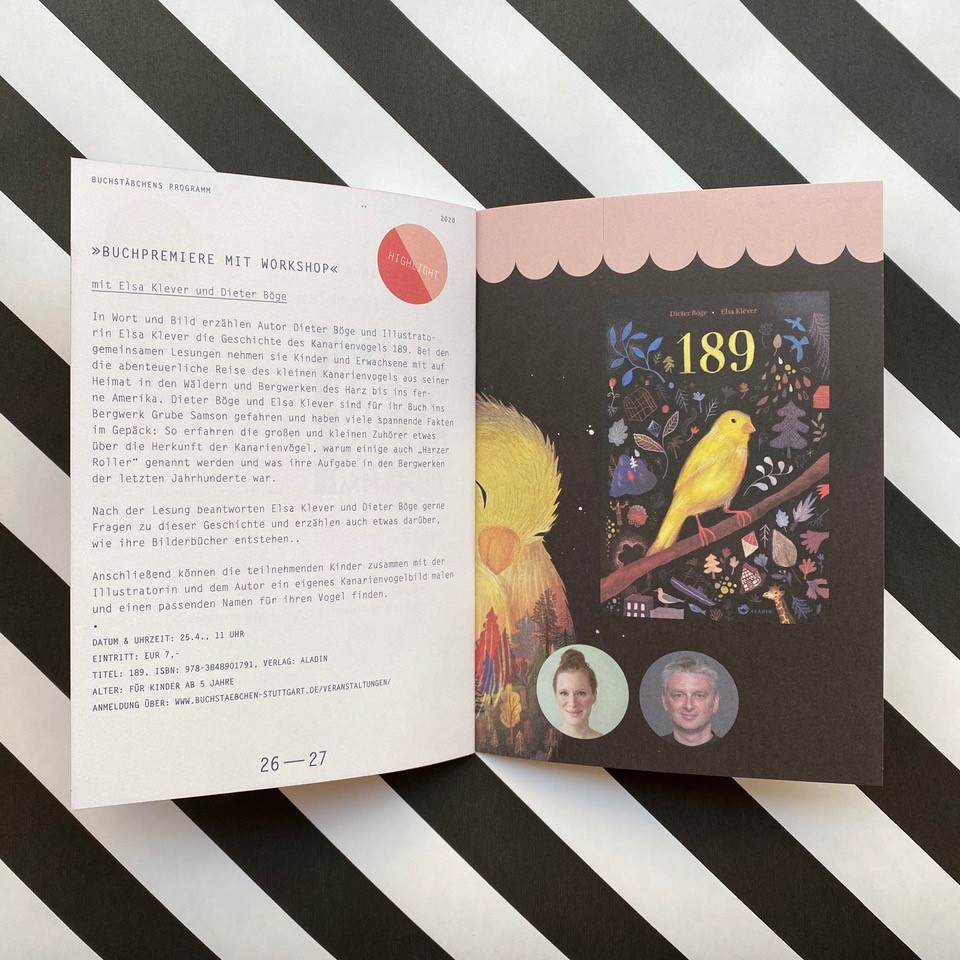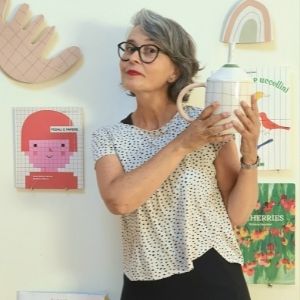
Get the latest updates in your inbox and sign up for more info!
Bookshelves Ahoy! In this Fairtales column, children’s literature expert Petra Paoli takes us around the world exploring independent bookstores for children and young adults.
In Germany, children's publishing is flourishing. The Frankfurt Buchmesse has for some years now given special focus to children's books.
We know that already in the 1970s, children’s bookstores were exiting places, their shelves full of books by many innovative authors. This was followed by the Hugendubel bookshops, which introduced a whole new book-selling concept based on large, welcoming places where you could sit on comfortable sofas, in well-kept children's sections, all of which, naturally helped drive quality children’s book publishing. Then, gradually, that quality slipped away. Children's sections conformed to mass market requirements and that weighty body of cultured German readers were deprived of many beautiful opportunities. In 2015, Hugendubel in Munich employing 87 was closed and is now history. But what about today? Fortunately, situations evolve and change course, and today on the horizon we see the Leipzig fair with a rich offering of children's programmes alongside the appearance of brand-new bookshops like the one we encountered while surfing the Instagram seas. We landed in southern Germany, in the heart of Stuttgart at the BUCHSTÄBCHEN bookshop. The store’s wide and varied selection of illustrated books has been given a setting where attention to the particular needs of children is clearly evident in the spatial distribution, style and layout into a series of attractive environments in which to enjoy the collection of books, toys and objects. My host was Myriam Kunz. What immediately strikes you about her is her can-do attitude, willingness to change and her personal story of finding a new profession in books.
When did your project start? What were the individual professions you channelled into the project?
The idea for my bookstore came to me in spring 2016. I was a mum with two girls of 5 and 7, and after a very exiting but exhausting 15 years working as an architect together with my husband, I was tired and had a burn out, and so was looking for a new and interesting field of work where I could use my sense of design and materials, and also come into contact with people.
Books had always been a very important in my life. As a child I spend hours and hours with picturebooks.
They were a safe place, helping me escape stressful situations.
Seeing that my youngest daughter had the same passion for picturebooks, gave me the idea.
As an architect, the bookshop was designed in a day. The rest though, I had to learn step by step, finally opening the BUCHSTÄBCHEN on 15 November 2016.
The first shop we opened on a relatively quiet side street in the west of Stuttgart. From the very beginning, events and exhibitions were held in the store. The premises were charming but space was very tight. Then, at the end of 2017, a pop-up store was opened in central Stuttgart eight weeks before Christmas. It was an exciting space in a passageway made available for temporary use by many other young start-ups. In 2018, the opportunity came along for a significantly larger store area of approximately 120 square meters at Bismarckplatz, a well-frequented pedestrian junction in the western district of Stuttgart
With the move in February 2019, BUCHSTÄBCHEN doubled and the existing concept of ‘bookshop, workshops, gallery’ could be further expanded. Before COVID-19, the event space held readings by various authors such as Stefanie Höfler, Thorben Kuhlmann, and Katja Seide. Parallel to this, we held exhibitions with the original works of illustrators Anna-Katerina Jansen, Nele Palmtag, and Julie Völk. With the expansion, we were able to offer a fairy tale hour every second Saturday, and a monthly meeting of the reading club ‘BUCHSTÄBCHEN-Freunde.’ At these meetings, books are exchanged, read out to each other, and sometimes an author would drop-in. The children could meet these personalities up close, get an insight into the way writers work, and have a conversation with them.
How does your bookshop fit into its urban fabric?
We are situated in a neighbourhood with lots of young families. There are lots of cafés and bars around, and I really feel at home here.
What kind of selection do you make when you choose your books? How many books do you have? Do you also have toys or other types of objects?
As an independent bookseller, we are totally free in our decisions on our choice of books. We only buy books that appeal to us particularly. A book has to really move us to find its way onto shelves.
We sell wonderful, lovingly-designed light-hearted children's books, but also titles on more serious topics such as death, abuse, violence in the family, and war. Other focal points are diversity, feelings, nature conservation, and sustainability for different age groups. In addition to great new publications, we also carry an unusually large number of backlist titles. The great variety of books is often reflected in the length of time customers spend with us.
In normal times, we find our books at trade fairs, where we can get an overview, pick up the books, and exchange ideas with the publishers. This was not possible in 2020. That's why this year we're increasingly looking at the websites of the various publishers and of course the reviews. A book’s content, graphic design, and style are also decisive.
We offer around 3500 children’s and family books at the moment.
During the Coronavirus lockdown we added cookery books. And yes, we have a fine selection of well-designed toys and lifestyle products.
This year has created difficulties that were unimaginable before, forcing each of us to find new solutions.
Would you like to tell us about the strategies you have adopted?
2020 was challenging on many different levels. In spring 2020, we had our online store, which was stretched to its limit with around 1000 items. With this store, we "bumped up" the lockdown period. From one day to the next, we turned the actual store into a packing station. Orders coming in through different channels were put together, packed, invoiced, and sent out. For customers from the neighbourhood, we converted the BUCHSTÄBCHEN's wheel transport box and used a goods for cash system. We were also fortunate that two young people from the neighbourhood agreed to make smaller deliveries by backpack and skateboard in the west of Stuttgart. All other orders were picked up by our parcel courier.
At the same time, all events were cancelled. We had just printed our new 32-page events calendar—a lot of work for nothing. Added to that, our own children were home, of course, and needing care. We couldn't take them to the store for hygiene reasons and social distancing rules. So, all in all, many balls had to be kept in the air at the same time and there were plenty of evenings when we sank into bed dead tired and still couldn't get a wink of sleep.
Stay tuned! We’ll be looking at other bookstores around the world.

While not lasting 80 days, we will nevertheless go around the world investigating independent bookstores for children and young adults.
After 8 years working in a specialist bookstore, ceramist and children’s literature expert Petra Paoli founded Odeon Studio, a cultural space for art and illustration. A researcher, she is also involved in education and training and is a Board member of the Accademia Drosselmeier - School for Bookstore Managers and Literature Study Centre.
She also acts as secretary and board member of Alir, the Associaiton of Independent Children’s Bookstores.
Pictures Credit: Julia Sang Nguyen and Annette Kuhls